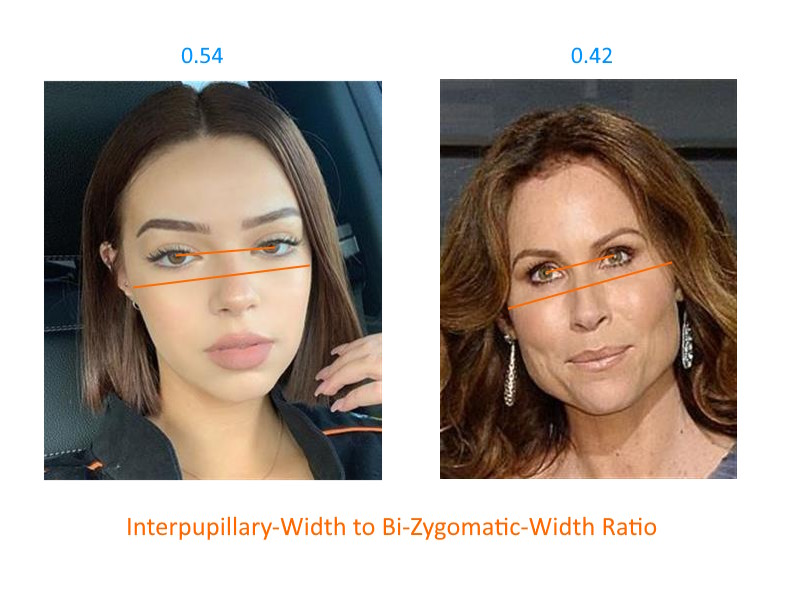Summary A larger ratio of philtrum length to mouth length is considered a masculine feature, while a smaller ratio is a feminine one. Two studies have revealed distinct facial differences between males and females, especially concerning the philtrum (the groove between the nose and upper lip) and mouth. The first study by Shin et al. […]
Category: Golden Proportion
Summary Skomina et al. (2020) found that men typically have wider mouths and bigger noses than women. This results in different mouth-width to nose-width ratios between the genders. Women generally have a smaller ratio, indicating narrower mouths in proportion to their noses, making it a feminine feature. This observation is supported by the changes seen […]
Summary Facial aesthetics offer valuable insights into the portrayal of gender through physical attributes, with eyebrow thickness being a prominent feature in this context. Studies (Mogilski-2018) have shown that eyebrow prominence is typically larger in men, associated with a masculine face shape and inversely related to a feminine face shape. Men often have heavier, straighter […]
Summary A larger ratio of Nose-Length to Philtrum-Length is considered as feminine feature, while a smaller ratio of Nose-Length to Philtrum-Length a masculine one. Research by Sforza et al. (2011) found that as infants grow, their nasal dimensions change, with the philtrum length increasing more rapidly than the nasal bridge length in the initial months. […]
Summary A shorter chin length is typically perceived as a feminine trait, as opposed to the larger, more pronounced chins generally found in men. Men often exhibit more pronounced lateral tubercles (bony areas at the chin base), contributing to a broader chin appearance, identified as a masculine feature. Thus, comparatively, a shorter, less broad chin […]
Summary A larger positive Eye Canthal Tilt is considered a feminine feature, while a smaller Eye Canthal Tilt is a masculine one. Penčić et al. (2019) suggest that a “positive canthal tilt”, where the outer corner of the eye is higher than the inner, is perceived as a feminine feature. This is because it is […]
Summary Studies by Jung et al. (2018) and Moradinejad et al. (2022) suggest that the dimensions of the lower face play a significant role in perceptions of female attractiveness. The research revealed a preference for a smaller bi-gonial width (width across the jawline), typically equal to or up to 10% narrower than the bi-zygomatic width […]
Summary Sexual selection and male mate choice favor females with features such as neotenic faces, high-pitched voices, and big eyes, as they trigger a primal male impulse to protect infants. Many scientific studies have shown that a woman’s eye size significantly influences her overall facial attractiveness. A woman’s eye size along with the nose size […]
Summary Chin length is distance from the lower edge of the lower lip to the base of the chin. Research from the University of St Andrews shows that attractive female faces typically possess more feminine features such as a smaller chin and higher cheekbones. A study suggested that broader and longer chin, often seen in […]

Summary Interpupillary Width is the distance between the centers of the pupils of the two eyes, while Bi-Zygomatic Width is the distance between the most prominent points of the cheekbones. A greater ratio of Interpupillary Width to Bi-Zygomatic Width results in the appearance of the eyes being larger in proportion to the rest of the […]